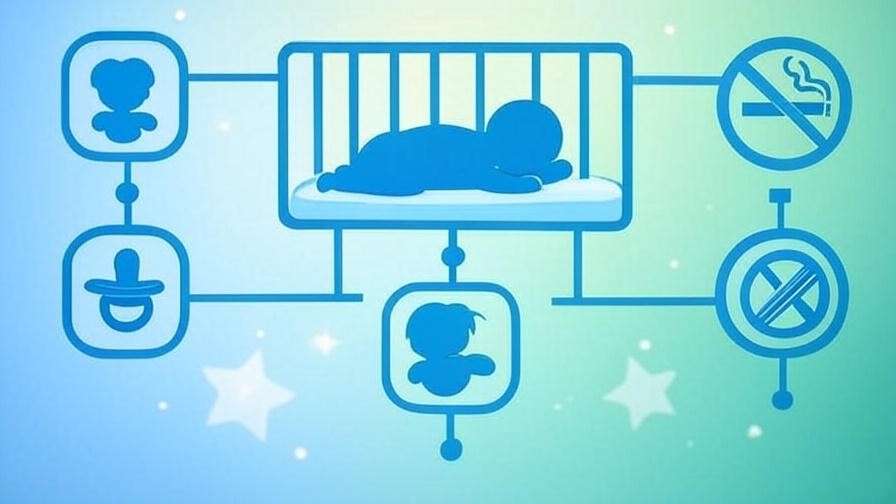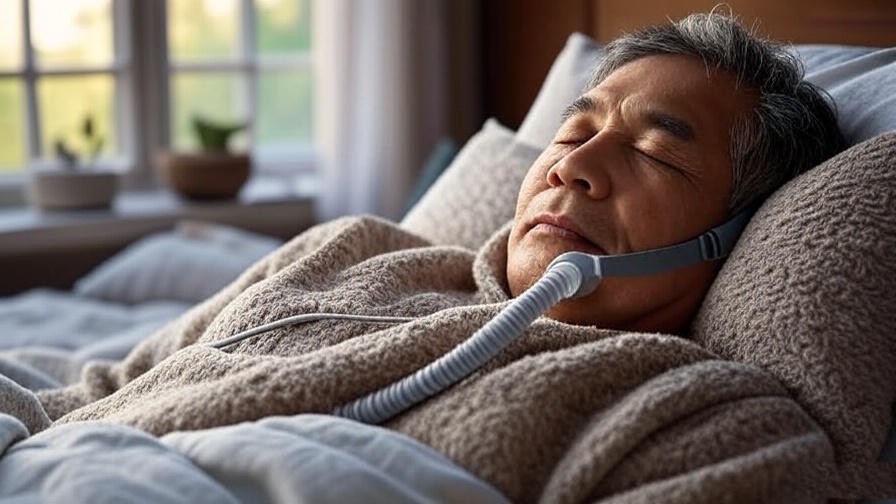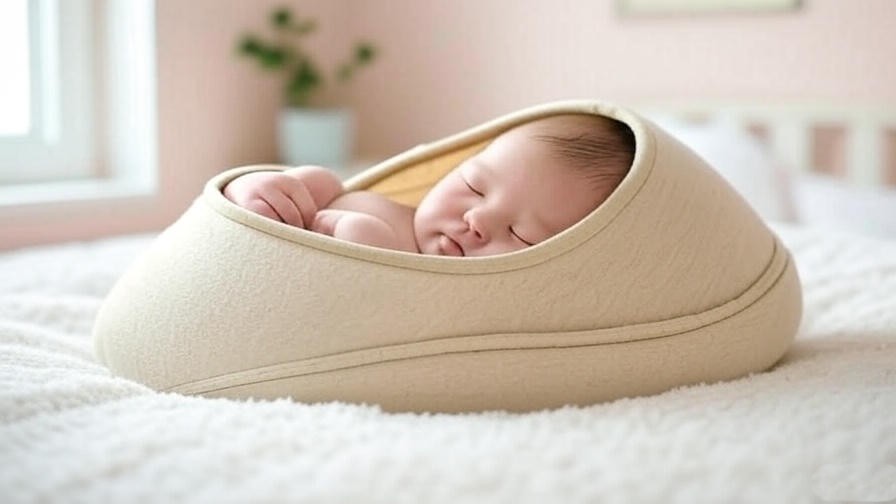It’s 2 a.m., and you peek into your baby’s crib, heart racing as you see them lying on their stomach, face pressed against the mattress. If your baby rolls onto their stomach while sleeping but can’t roll back, you’re not alone—this common milestone often sparks worry for new parents. Around 4-6 months, babies start rolling over, a sign of healthy development, but it can raise concerns about safe sleep and risks like Sudden Infant Death Syndrome (SIDS). As a sleep expert with years of experience guiding parents, I’ve seen how this phase can disrupt peace of mind. Backed by pediatric guidelines from the American Academy of Pediatrics (AAP), this article offers practical, evidence-based solutions to help you navigate this milestone, ensuring your baby sleeps safely while you rest easier.
Why Babies Roll Onto Their Stomachs While Sleeping
Developmental Milestones and Rolling

Rolling over is a major milestone in your baby’s development, typically occurring between 4 and 6 months. This exciting phase reflects growing muscle strength and coordination as your baby learns to control their body. According to pediatric research, rolling from back to stomach often happens first because it relies on stronger arm and core muscles. For many parents, this moment is both a joy and a source of anxiety, especially when it happens during sleep. Understanding that rolling is a natural part of motor skill development can help you approach this phase with confidence.
Why Babies Struggle to Roll Back
While rolling onto the stomach comes relatively easily, rolling back to the back is often more challenging. This asymmetry in motor skills is normal—babies need time to strengthen the muscles required for the reverse motion. A 2019 study in Pediatrics found that most infants master rolling both ways by 6-7 months, but some take longer. During this transitional period, babies may get “stuck” on their stomachs, leading to parental concern about safe sleep positions. Recognizing this as a temporary phase can ease worries while you focus on creating a safe sleep environment.
Instinct vs. Safety Concerns
Many babies seem to prefer sleeping on their stomachs, possibly because it feels cozy or mimics their in-utero position. However, this preference clashes with safe sleep recommendations. Stomach sleeping in infants under 1 year is associated with a higher risk of SIDS and suffocation, particularly if a baby can’t roll back independently. The AAP strongly advises back sleeping for all infants to minimize these risks. Understanding why your baby gravitates toward stomach sleeping can help you address their comfort needs while prioritizing safety.
Is It Safe for Babies to Sleep on Their Stomachs?
Understanding SIDS and Sleep Position Risks

Sudden Infant Death Syndrome (SIDS) remains a top concern for parents, and sleep position plays a critical role. The CDC reports that SIDS rates have declined significantly since the “Back to Sleep” campaign began in the 1990s, emphasizing back sleeping for infants. Stomach sleeping increases the risk of SIDS by up to 13 times, particularly for babies under 6 months, due to potential airway obstruction or rebreathing of exhaled air. Ensuring your baby sleeps on their back is one of the most effective ways to reduce this risk.
When Stomach Sleeping Becomes Safer
The good news? Once your baby can roll both ways independently—typically between 6 and 12 months—stomach sleeping becomes less risky. The AAP notes that babies who can roll back and forth are better able to reposition themselves to avoid airway obstruction. However, this doesn’t mean you can relax entirely. A safe sleep environment remains crucial, even for babies who roll proficiently. Knowing when your baby reaches this milestone can help you adjust your approach without compromising safety.
Recognizing Your Baby’s Abilities
How do you know if your baby can roll back independently? Look for these signs during playtime:
- Consistent rolling: They roll from stomach to back and back to stomach with ease.
- Head control: They lift their head confidently during tummy time.
- Arm strength: They push up on their arms, indicating strong upper body muscles.
If your baby isn’t rolling back yet, continue to reposition them to their back during sleep. A simple checklist can help: observe their rolling during the day, note their age, and consult your pediatrician if you’re unsure about their abilities.
Immediate Steps to Take When Your Baby Rolls Onto Their Stomach
Stay Calm and Assess
Finding your baby on their stomach can be alarming, but staying calm is key. If your baby isn’t rolling back independently, gently roll them to their back without waking them. Use slow, gentle movements to avoid startling them, which could disrupt their sleep cycle. For example, place one hand on their shoulder and another on their hip, guiding them back smoothly. This simple action aligns with AAP recommendations and keeps safety first.
Monitor Without Obsessing
Constantly checking your baby’s position can lead to sleepless nights for you. Instead, invest in a reliable baby monitor, ideally with video capabilities, to observe their sleep position from afar. Brands like Nanit or Owlet offer high-quality options with clear visuals, allowing you to monitor without hovering. Strike a balance: check periodically, but avoid intervening unless necessary. This approach supports both your baby’s rest and your peace of mind.
When to Stop Repositioning
Once your baby can roll both ways consistently, you can stop repositioning them during sleep. Pediatricians agree that independent rollers are generally safe to sleep in their preferred position, as they can adjust to avoid risks. To confirm this milestone, watch for fluid rolling during playtime and consult your pediatrician if you’re uncertain. This shift marks a significant step in your baby’s development, allowing you to focus on maintaining a safe sleep environment rather than constant repositioning.
Creating a Safe Sleep Environment
Crib Safety Essentials
A safe crib setup is non-negotiable when your baby starts rolling. The AAP recommends:
- Firm mattress: A flat, firm surface reduces suffocation risks.
- Fitted sheet: Use a tight-fitting sheet designed for the crib mattress.
- No loose items: Remove blankets, pillows, stuffed animals, and bumpers to prevent entrapment.
These guidelines ensure that, even if your baby rolls onto their stomach, the crib remains a safe space. Regularly inspect the crib for wear and tear, such as loose screws or slats, to maintain safety.
Choosing the Right Sleep Surface
Not all mattresses are created equal. Opt for a breathable, firm crib mattress certified by organizations like the Juvenile Products Manufacturers Association (JPMA). Brands like Newton Baby offer mattresses with breathable materials designed to reduce suffocation risks. Avoid memory foam or overly soft surfaces, which can conform to a baby’s face if they roll onto their stomach. When choosing a mattress, consider:
- Certifications: Look for GREENGUARD Gold or CertiPUR-US certifications.
- Breathability: Prioritize designs that promote airflow.
- Fit: Ensure the mattress fits snugly in the crib with no gaps.
Room Conditions for Safe Sleep
The sleep environment extends beyond the crib. Maintain a room temperature of 68-72°F to prevent overheating, a known SIDS risk factor. Use a fan for ventilation, but avoid directing airflow at the crib. Dress your baby in light, breathable clothing or a sleep sack to keep them comfortable without loose bedding. A quick checklist for parents:
- Room temperature: 68-72°F
- Ventilation: Use a fan or open a window slightly
- Clothing: One layer more than what an adult would wear
- No cords: Keep blinds or curtain cords out of reach
Strategies to Prevent Unsafe Stomach Sleeping
Practice Tummy Time During the Day

Tummy time is a powerful tool to help your baby develop the strength needed to roll back. According to pediatric experts, regular tummy time strengthens neck, shoulder, and core muscles, enabling smoother rolling in both directions. Start with 3-5 minute sessions, 2-3 times daily, on a soft surface like a play mat. Make it fun with toys or a mirror to keep your baby engaged. For example:
- Place your baby on their tummy on a blanket.
- Position a colorful toy just out of reach to encourage movement.
- Gradually increase session length as they grow stronger.
Swaddling and Transitioning to Arms-Free Sleep
For younger infants (under 4 months), swaddling can prevent rolling by keeping arms and legs secure. Use a lightweight, breathable swaddle, ensuring it’s snug but not too tight. The AAP advises stopping swaddling as soon as your baby shows signs of rolling, typically around 3-4 months, to avoid entrapment risks. Transition to a sleep sack or wearable blanket, such as those from Halo or Nested Bean, which allow arm movement while maintaining a cozy feel. This gradual shift supports safe sleep as your baby’s mobility increases.
Positioning Techniques
For babies not yet rolling both ways, positioning can help limit rolling during sleep. Place your baby at the bottom of the crib to reduce the space available for rolling. For very young infants, you can use rolled towels placed under the mattress (not in the crib) to create a slight incline, but consult your pediatrician first. Avoid commercial sleep positioners, as they pose suffocation risks and are not AAP-approved. These techniques offer temporary solutions while your baby develops rolling skills.
Long-Term Solutions for Safe Sleep
Encouraging Independent Rolling Skills
Helping your baby master rolling in both directions is a proactive way to ensure safer sleep. During playtime, create opportunities for your baby to practice rolling back from their stomach. Place them on a soft, flat surface and gently guide their hips or shoulders to initiate the motion. For example, Sarah, a first-time mom, shared: “I spent 10 minutes daily rolling my 5-month-old back and forth on a play mat. Within two weeks, she was rolling back independently during sleep!” Activities like these build muscle memory and confidence. Try:
- Rolling games: Gently roll your baby side to side, making it fun with songs or smiles.
- Obstacle-free play: Use a spacious, safe area to encourage natural movement.
- Positive reinforcement: Cheer or clap when they roll to keep them motivated.
Pediatric studies show that consistent practice can accelerate this milestone, reducing the need to reposition during sleep.
Adjusting Sleep Routines

A consistent sleep routine promotes better rest and reduces restlessness, which can contribute to excessive rolling. Babies thrive on predictability, so establish a calming bedtime ritual. For example, a 6-month-old’s routine might include:
- 6:30 PM: Bath with lavender-scented soap.
- 6:45 PM: Gentle massage with baby-safe lotion.
- 7:00 PM: Dim lights, read a short story, and place in crib drowsy but awake.
For naps, follow a similar pattern with shorter steps. According to a 2020 study in Sleep Medicine, infants with consistent routines fall asleep faster and wake less often, minimizing disruptive rolling. Adjust the schedule based on your baby’s age and needs, aiming for 12-16 hours of total sleep daily for 4-12-month-olds.
Consulting a Pediatrician
If your baby’s rolling seems delayed or you’re concerned about their sleep safety, consult a pediatrician. They can assess developmental milestones and rule out issues like muscle weakness or neurological concerns. Bring a list of observations, such as:
- How often your baby rolls onto their stomach.
- Whether they show signs of rolling back during play.
- Any changes in sleep patterns or breathing.
For instance, if your 7-month-old still can’t roll back, a pediatrician might recommend physical therapy exercises. Regular check-ups also provide peace of mind, reinforcing safe sleep practices tailored to your baby’s needs.
Common Myths About Babies Sleeping on Their Stomachs
Myth: Stomach Sleeping Is Always Dangerous
While stomach sleeping is riskier for infants under 6 months, it’s not inherently dangerous once a baby can roll both ways. The AAP clarifies that independent rollers can safely choose their sleep position, as they can adjust to avoid airway obstruction. However, parents must maintain a safe sleep environment—no loose bedding or soft surfaces—regardless of rolling ability. Debunking this myth helps parents focus on practical safety measures rather than unnecessary panic.
Myth: Babies Need Stomach Sleeping for Comfort
Some parents believe stomach sleeping is more comfortable, but back sleeping is equally restful with the right setup. A firm mattress, cozy sleep sack, and consistent routine ensure comfort without compromising safety. Research from the National Institutes of Health (NIH) shows that babies adapt well to back sleeping when introduced early, debunking the idea that stomach sleeping is a necessity.
Myth: Rolling Means Your Baby Is Ready for a Pillow
A common misconception is that rolling babies can use pillows or soft bedding. This is false—pillows, blankets, and stuffed toys are unsafe for infants under 1 year, regardless of rolling skills. The AAP warns that these items increase suffocation risks, even for mobile babies. Stick to a bare crib with a fitted sheet to keep sleep safe.
FAQs About Babies Rolling Onto Their Stomachs
Q: What should I do if my baby keeps rolling onto their stomach at night?
A: If they can’t roll back, gently reposition them to their back without waking them. Ensure the crib is free of loose items. If they roll both ways, monitor but allow them to sleep in their preferred position, maintaining a safe environment.
Q: At what age is it safe for my baby to sleep on their stomach?
A: It’s generally safe once they can roll both ways independently, typically between 6 and 12 months. Consult your pediatrician to confirm your baby’s readiness.
Q: Can swaddling prevent my baby from rolling?
A: Yes, swaddling can prevent rolling in younger infants, but stop once rolling begins (around 3-4 months) to avoid entrapment risks. Switch to a sleep sack for safety.
Q: Should I use a sleep positioner to keep my baby on their back?
A: No, sleep positioners are not recommended. The AAP warns they can cause suffocation. Use a firm mattress and reposition your baby manually if needed.
Expert Insights and Parental Tips
Dr. Emily Carter, a pediatric sleep consultant, shares: “Rolling is a healthy milestone, but parents must prioritize a safe sleep setup. A bare crib and back sleeping are non-negotiable for infants under 6 months.” To build trust, consider this parent story: “When my son started rolling at 5 months, I was terrified,” says Lisa, a mom of two. “Tummy time during the day and a video monitor helped me relax. By 6 months, he was rolling back easily, and I stopped worrying.”
Parent’s Toolkit for Safe Sleep:
- Track progress: Keep a log of your baby’s rolling milestones to share with your pediatrician.
- Invest in safety: Choose a breathable, JPMA-certified mattress.
- Stay informed: Read AAP’s safe sleep guidelines for the latest recommendations.
- Build confidence: Practice tummy time daily to support motor development.
Conclusion
When your baby rolls onto their stomach while sleeping, it’s a sign of growth—but it can feel daunting. By understanding why this happens, creating a safe sleep environment, and encouraging rolling skills, you can navigate this phase with confidence. From tummy time to consistent routines, these evidence-based strategies, backed by the AAP and pediatric experts, empower you to keep your baby safe while fostering healthy development. For more tips, explore our articles on tummy time benefits or SIDS prevention, and consult your pediatrician for personalized advice. With the right approach, you and your baby can both enjoy restful, worry-free nights.













